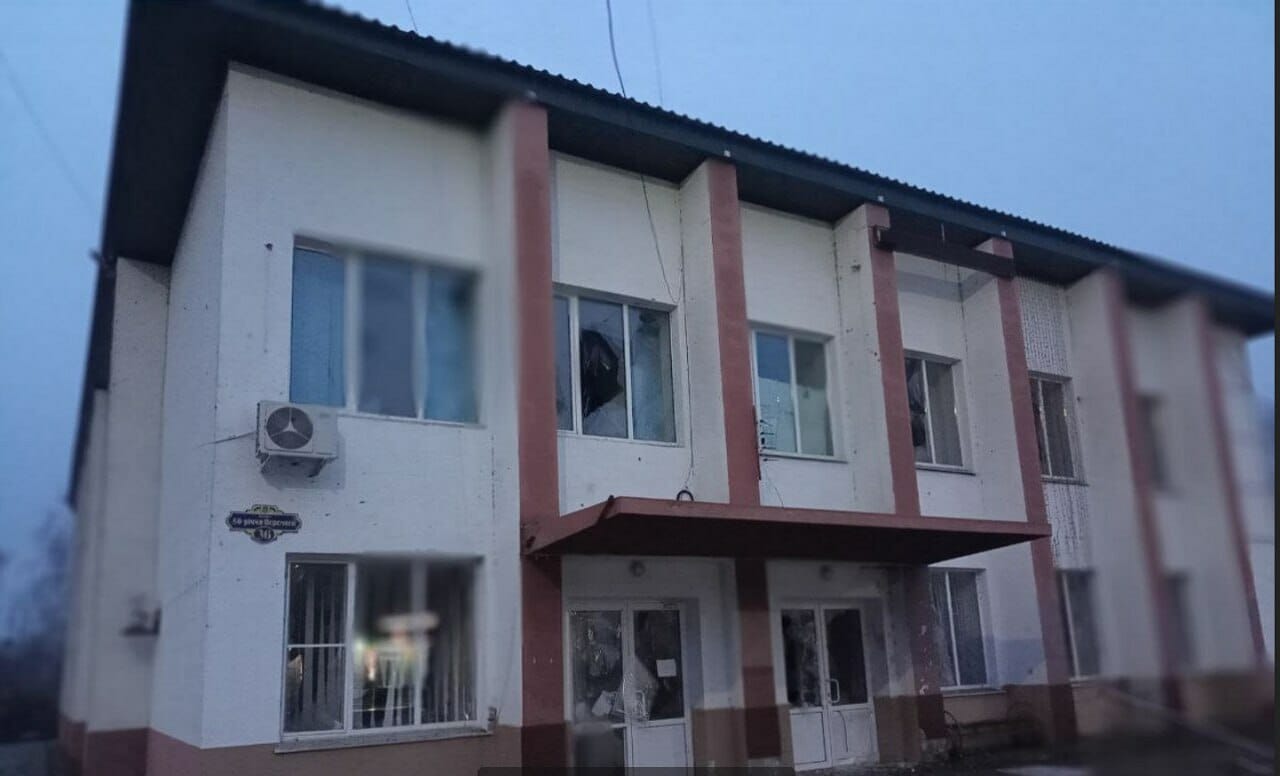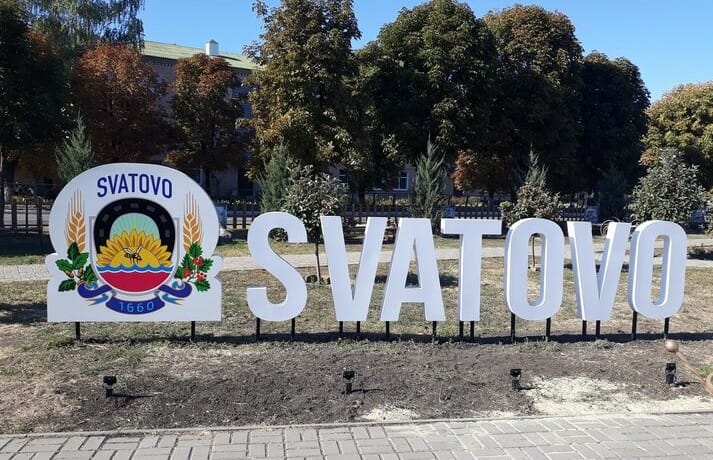This website uses cookies so that we can provide you with the best user experience possible. Cookie information is stored in your browser and performs functions such as recognising you when you return to our website and helping our team to understand which sections of the website you find most interesting and useful.
Svatove Territorial Community

The Svatove Urban Territorial Community is located in the eastern part of Ukraine, in the Luhansk Region.
The community includes the town of Svatove, 20 villages and 3 settlements. A road of state importance and a railway junction of intercity and regional connections pass through the centre of the community.
26,425 people lived in the community before the full-scale russian invasion.
Women: 12,176 persons
Men: 9,662 persons
History
Excavations of ancient barrows in the steppes of Svatove point out to ancient settlements of the Trypillia times.

The town of Svatove was founded in the 1660s by Ukrainian Cossack settlers as the settlement of Svatova Luchka. It got its name from the Svaha River, which no longer exists.
The territory was inhabited by peasants and Cossacks of Left Bank and Right Bank Ukraine. Surviving the russian imperialism, the calamities of the revolution, and the Second World War, Svatove became a centre with a developed industrial and production base, and the fertility of black soils made it possible to develop agriculture, animal husbandry, and vegetable growing.
In the territory of the community there is the Honcharivskyi botanical reserve and the Svativskyi general zoological reserve.
There are monuments of historical cultural heritage in the community – the Church of John the Baptist in the village of Miluvatka and the Church of the Assumption of the Blessed Virgin Mary (St. Andrew’s Church) founded in 1770.

Economy and Welfare
The main resource of the community is its black soil. More than 50 agricultural producers work on more than 70 thousand hectares of land. The economic component is represented by enterprises producing agricultural products, enterprises of the food and processing industry focused on the processing of agricultural products.
Oil, meat processing and food enterprises are among the largest ones.

Craft beer is brewed by West Management, a private enterprise. Agrorodyna farm produces poultry products and is a supplier of quail eggs throughout Ukraine.
Grain processing and storage operations are carried out by elevator complexes such as NIBULON, Myrna Dolyna, Svatove Agro. It has its own production of bread and bakery products.
And on 12 June 2023, beekeeping in the Svatove Community was recognized as an element of intangible cultural heritage. The producer of honey, cosmetics and craft products based on natural honey – Honey Source – is a well-known brand outside the Svatove Community.
A tourist farm of this company in the village of Zmiivki is a picturesque place for recreation, which started the tradition of treatment and recovery of the body with the help of apitherapy (recovery using beekeeping products).


Before the full-scale invasion, 25 educational institutions worked in the Svatove Community: 13 schools, 10 kindergartens and 2 extracurricular educational institutions: a children’s sports youth school and the Physical Health Centre of the Svatove Territorial Community “Sports for All”.
Before the war, the field of medicine in the community consisted of 7 outpatient clinics, 8 first aid centres and a hospital.
The field of culture and art in the community included 14 clubs, 1 library and 11 branches in the community’s villages, a museum and an art school.
Various cultural events were often held in the community.
Once every two years, the Slobozhanskyi Spas international arts festival was organized, which became the hallmark of the Svatove area over the years.


Community and War
During the first days of the full-scale invasion, a humanitarian hub was created on the initiative of the local authorities. Residents came together to provide various aid. The hub, located in the building of the Svatova – Luchka municipal cultural centre, worked around the clock and received refugees from all the areas of the Luhansk Region, where active hostilities were already taking place.

Those who remained in Svatove were resettled temporarily in humanitarian shelters deployed throughout the community. The humanitarian hub and humanitarian shelters performed their function until the full occupation of the community territory at the beginning of March 2022.
Showing their patriotic stance and support for Ukrainian statehood, the residents of the community organized themselves on social media and walked out on several occasions to protest against the occupation by the invaders.
But unarmed people with blue and yellow flags could not resist armed invaders on tanks. There were intimidations, there were threats, to which the residents of Svatove responded with a Ukrainian song and shouts that Svatove is Ukraine! This lasted for more than a week. Since 08 March 2022, the Svatove Community has been fully occupied.
Constant pressure by the russian invaders on the pro-Ukrainian population, danger to life due to shelling and active hostilities forced a significant part of the residents to leave for safer regions of Ukraine and abroad.
The absence of mobile communications and the Internet connection in the occupied territory does not allow an objective assessment of the damage caused by the war to the community.
Today, many buildings are known to have been destroyed.




People of the Community
In 2020, as a result of the decentralization reform, the community was headed by Vita Slipets.

The expansion of the territory of the community became a new challenge in establishing the work of local self-government bodies. Reforms and projects were implemented in the community, taking into account the most remote settlements.
A system of providing social, medical, educational and cultural services was established. The Town Council continued to actively participate in grant contests and projects to improve people’s lives and community development.
Thus, the emergency department, intensive care department, and polyclinic department were renovated, modern medical equipment was purchased, and the range of medical services at the Svatove multiservice hospital was expanded.
A day care centre for victims of domestic violence and abuse was established.
An overhaul of the treatment facilities of the town’s water drainage system was carried out.
Much attention was paid to the improvement of the community. Three multifunctional sports grounds were installed: work-outs, modern children’s playgrounds. Sports rooms were created at village cultural centres in order to encourage people to practice sports and lead a healthy lifestyle.
The tradition of joint celebrations of the Village Day was started.
Along with local animal protection activists, measures aimed at the protection and improvement of conditions for stray animals were carried out. With the active participation of the Youth Council at the Svatove Town Council, environmental, scientific, educational and cultural events were held.
After the full-scale invasion, a humanitarian aid hub for refugees was created on the initiative of the Svatove head, Vita Slipets. The head of the community conducted daily live broadcasts on social media to inform the population about the security and humanitarian situation in the community. Together with the active community, she participated in resistance rallies. She stayed with her community in the town until her activities became dangerous for her life. As a result, she was forced to leave the territory under the control of the Government of Ukraine.
Development Strategy

The war made drastic changes in the life of the Svatove Community. More than half of the community’s pre-war population was forced to leave their homes due to the oppression of the occupation authorities. Overcoming the obstacles and challenges that Svatove residents face today and adapting to new living conditions, the people of the community are hopeful of returning to their homes. In turn, the local authorities take measures to restore the work of subordinate enterprises in safer regions of Ukraine and search for partners to get financial and organizational support in order to restore the community after its de-occupation.
The strategic goal of the community development is to create a safe, comfortable and energy-efficient community area after its de-occupation and carry out the following activities:
- demining the territory;
- developing a plan for the restoration of local settlements;
- ensuring safe and social conditions for the return of community residents;
- restoration, reconstruction and modernization of housing and municipal facilities and social infrastructure (restoration of educational, medical, cultural and sports facilities);
- expanding the use of alternative energy sources and energy-saving technologies;
- modernizing the solid household waste landfill and developing a solid waste management strategy;
- modernizing water supply and drainage systems.

